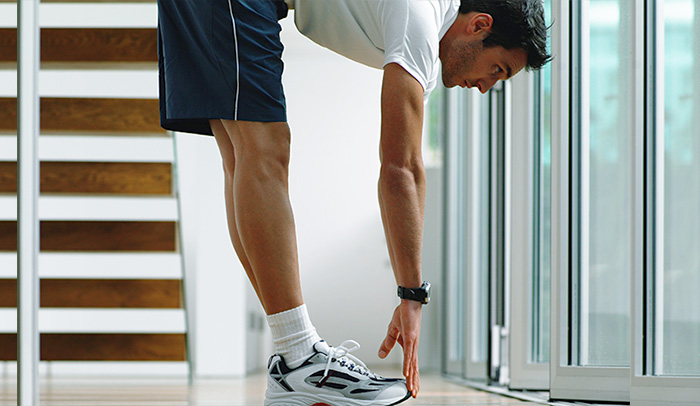Mobility at Home
Movement Restrictions
If you have had an injury to your limb (ex. foot, leg, arm or hand) you might not be allowed to use it to move. Your physiotherapist will teach you how to move and walk based on what the doctors have allowed. Once you are home, you may have to come back to the hospital for follow-up appointments. Your doctor may change your restrictions at your appointments. This will determine how much you can use your limb.
Here are some words the hospital staff may use to explain your weight bearing:
- Non Weight Bearing – absolutely no weight should be put on the arm or leg.
- Toe Touch Weight Bearing – you may rest part of your foot on the ground for balance only.
- Partial Weight Bearing – less than half your normal body weight on injured limb.
- Weight Bearing As Tolerated – you may put as much weight through your arm or leg as your pain tolerance allows.
- Full Weight Bearing – normal use of the arm or leg.
- Hip Precautions – do not to bend your hips too far. Do not cross your legs. The physiotherapist and other staff will review any hip precautions specific to your injury.
Braces/Casts/Splints
You may be sent home wearing a brace, cast or splint. It is important to be taught how to use or take care of it before you go home.
For any collar, brace, splint or boot, follow the instructions given to you by your health care team. If you have been given a specific handout, please use that.
Some casts/splints need to be kept dry. You should cover them for showering/bathing. Do not remove your cast. This will be done at your follow up appointment.
Swelling
Swelling in an injured arm or leg is normal and can happen for up to 1 to 2 years after an injury. It is a normal response in the body to help heal the injured area. You may notice more swelling when you become more active. When you experience an increase in swelling, rest the arm or leg, lift it on pillows so it is resting above the level of your heart. If the swelling does not go down or gets worse, call your family doctor or Sunnybrook surgeon.
Driving
Check with your doctor before you go back to driving a vehicle. If you have an injury to your limb, it may be important that you allow the limb to fully heal before driving. Also check with your car insurance, as it may not cover you if you are driving while you are injured.
Return to Work
Your return to work date will depend on your type of work and your injuries. Speak with your Sunnybrook doctor before you leave the hospital and during your follow up appointments for advice on when you can return to work.
Mobility Tips for a Healthy Recovery
- Some things that were easy to do before your injury might be harder to do now.
- Set a new goal each day.
- Make sure you are active throughout the day. Slowly increase your activity as you are able.
- Rest and take the pain medication recommended by your doctor when you need to.
- Talk to your doctor before doing any high energy exercise or contact sports.
Physiotherapy at Home
Your physiotherapist at Sunnybrook will tell you if you need more physiotherapy once you are at home. If you are still having trouble with your mobility at home and your physiotherapist hasn't recommended more physiotherapy, ask your family doctor or Sunnybrook surgeon if an outpatient physiotherapy appointment is needed.
Signs and Symptoms
If you have any of the following signs and symptoms, please call your family doctor or Sunnybrook surgeon:
- Much more pain/redness and swelling in your arms and legs
- Bleeding or sudden bruising
- Fever or chills
- Drainage or pus from a wound is getting worse or becoming thick, tan, yellow, green or smalls bad
- Much more trouble walking
- Falls
To find a registered physiotherapist, use one of these websites.
- Ontario Physiotherapy Association
opa.on.ca
Phone: 416-322-6866 - College of Physiotherapists of Ontario
collegept.org
Phone: 416-591-3828






